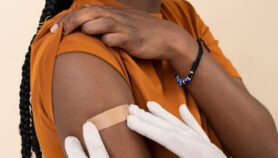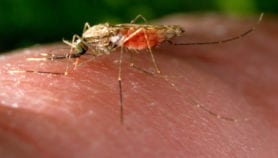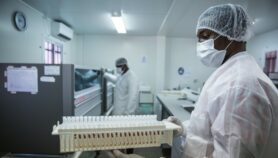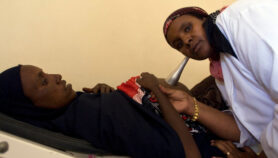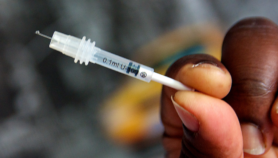By: Mićo Tatalović
Send to a friend
The details you provide on this page will not be used to send unsolicited email, and will not be sold to a 3rd party. See privacy policy.
Better vaccine supply and logistics systems are needed to help reach the 22 million children in developing countries who have still not received basic vaccines against dangerous diseases, according to a global partnership on vaccines.
This is one of the messages from a special issue of the Vaccine journal — published yesterday ahead of World Immunization Week (21–28 April) — that explores strategies to drive progress on the US$57 billion Global Vaccine Action Plan, endorsed by the WHO in 2012.
SPEED READ
- Rolling out the WHO Global Vaccine Action Plan requires stronger systems
- Complacency and misinformation are hampering implementation
- Critics say the plan is still not ambitious enough and does not reflect increased vaccine costs
"We have seen some major advances in the development and delivery of vaccines in the past few years," said Flavia Bustreo, assistant director-general at the WHO, in a press release. "But many countries still face obstacles in getting life-saving vaccines to every child who needs them."
However, international medical charity Médecins Sans Frontières (MSF) says that the action plan, while welcome, does not go far enough in ensuring the affordability of vaccines to developing countries or promoting new technologies for more-efficient vaccine delivery.
The plan was drawn up by the Decade of Vaccines Collaboration, a partnership that includes the WHO, the UN Children's Fund (UNICEF), the GAVI Alliance and the Bill & Melinda Gates Foundation.
It aims to strengthen immunisation systems to ensure that more vaccines are discovered, developed and delivered to people in most need.
The plan hopes to maintain a competent and motivated health workforce; to explore the use of mobile technology to strengthen communication and data capture across the supply chain; and to allocate more resources to remote and marginalised groups, including specific programmes to target nomadic and indigenous communities.
There is also an urgent need to communicate more effectively the health benefits provided by vaccines and the dangers of not immunising children, the partnership says.
"In some parts of the world, complacency about immunisation has led to gaps in vaccination coverage," said Geeta Rao Gupta, deputy executive director of UNICEF. "When gaps occur, outbreaks follow."
In other places, there are myths circulating that vaccines do not work or cause serious side effects, which have led parents and caregivers to refuse to vaccinate their children, the partnerships says.
But the Decade of Vaccines plan "lacks ambition when it comes to bringing vaccine prices down and making vaccines better adapted for use in developing countries", said Kate Elder, vaccines policy advisor for the charity's Access Campaign, in a press release today.
The plan also does "not contain any mechanism to track vaccine prices, despite the alarming fact that the cost to fully vaccinate a child has skyrocketed by 2,700 per cent over the last decade", she said.
"Just two new vaccines — for pneumococcal disease and rotavirus — make up three-quarters of what it costs to vaccinate a child today, yet very little is being done to make sure these prices come down further.
"Developing countries, which will over time lose donor support to pay for vaccines, will be left in the precarious position of not being able to afford the high price to vaccinate their children."
Elder also said that the "vaccines available today are difficult to get to children in the most remote places" and that the plan does not "do enough to make sure that vaccines are developed that are easier to use in hard-to-reach places, such as vaccines that don't require refrigeration, don't need to be delivered by needle or can be given in fewer doses".
The plan "has a very unambitious target of [getting] just one new vaccination delivery technology in place by 2020, even though several new products could be available much sooner — for example vaccines that are delivered through patches, air pressure or aerosol masks," Elder said.
But a GAVI Alliance spokesperson tells SciDev.Net that the situation has improved significantly over the past decade: "Today, for the first time in history, children in developing countries are being protected against major childhood killers, including pneumococcal disease and rotavirus, using highly technically-advanced vaccines".
GAVI and its partners are succeeding in reducing the cost of key vaccines, and working hard to develop new and innovative ways to reach more children, they say.
"For example, last year the MenAfriVac vaccine was approved to be transported outside the cold chain. The Global Vaccine Action Plan has a section dedicated to research and new ideas, and we welcome constructive input from all interested parties about how we can innovate further."
Link to special issue of Vaccine
See below for the Global Vaccine Action Plan:




